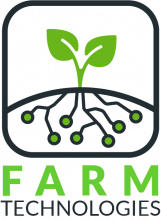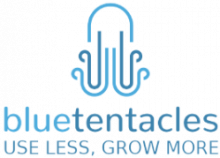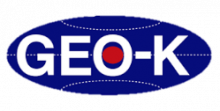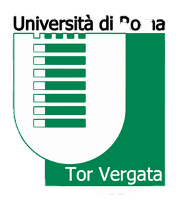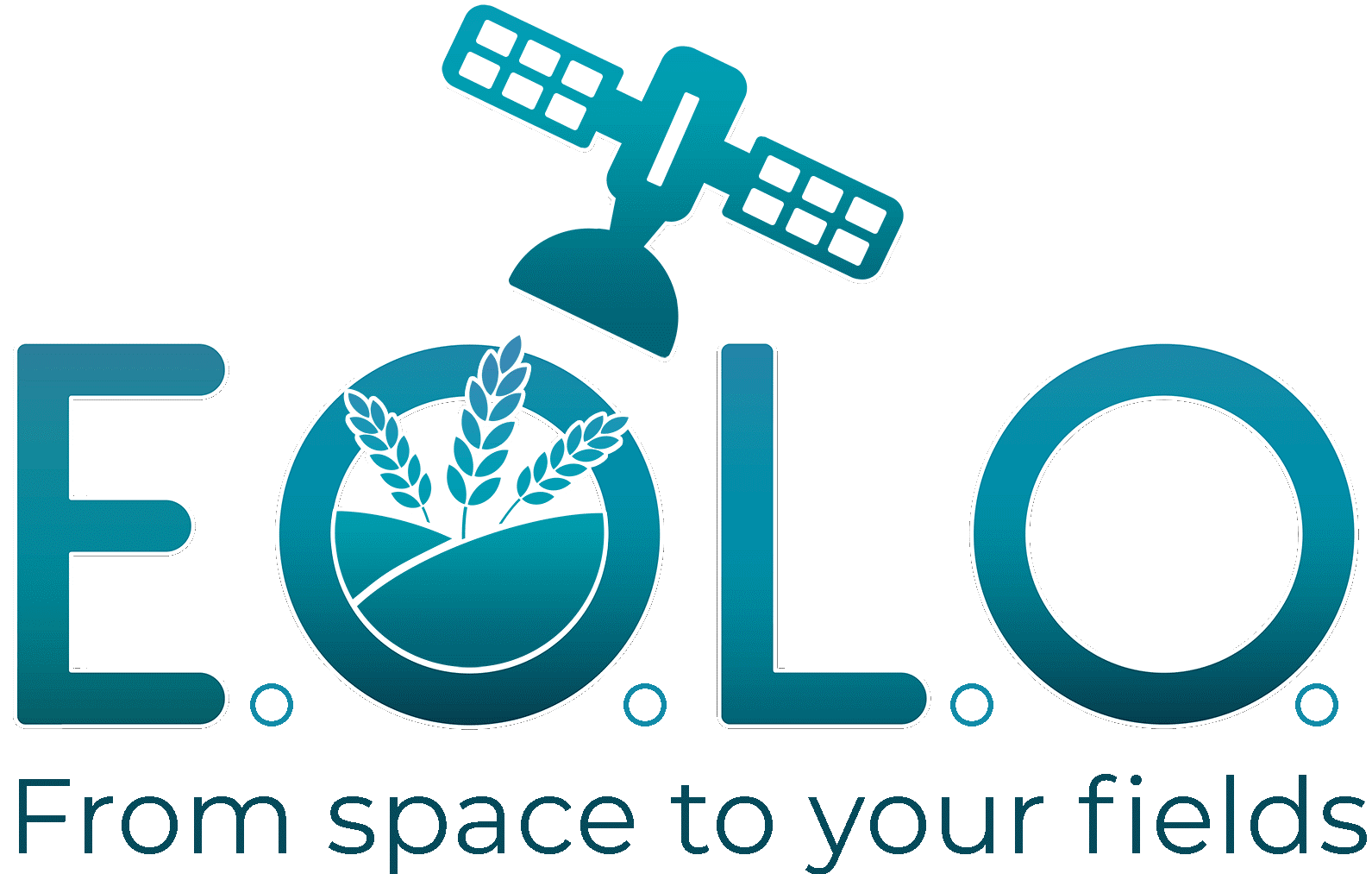
Objectives of the service
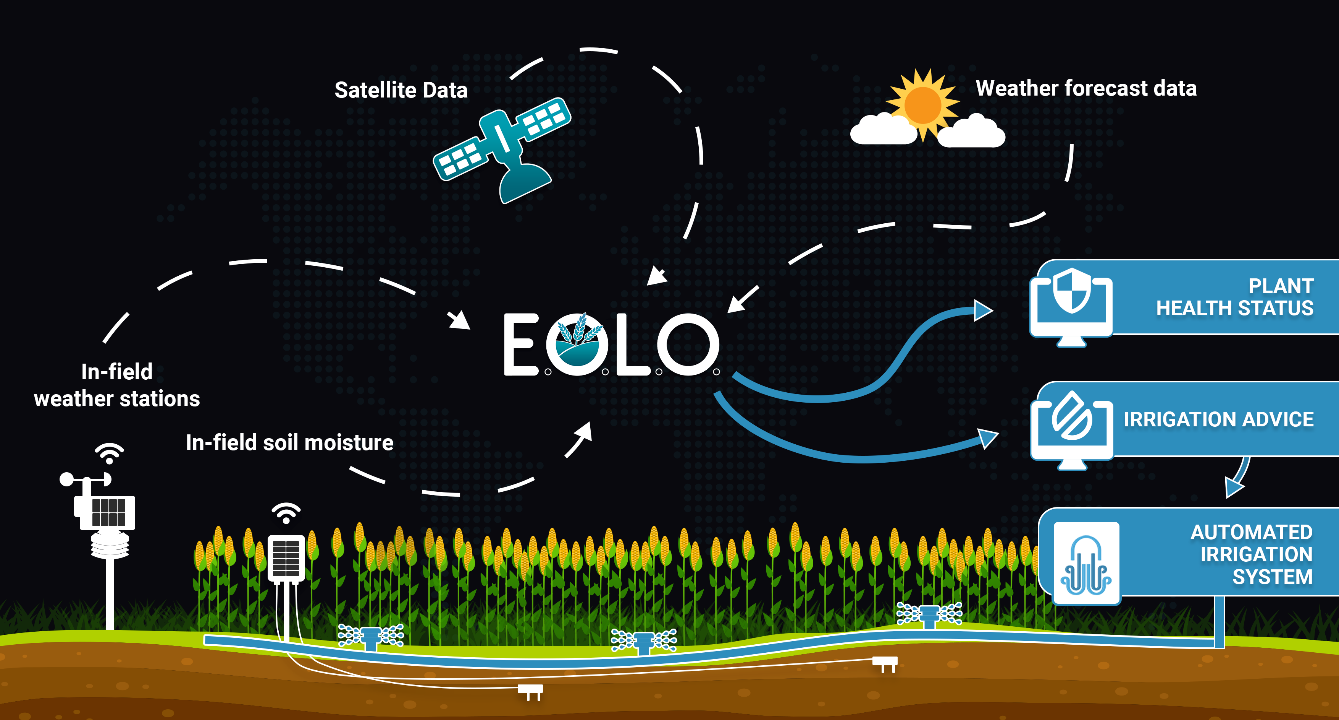
The most of the water available on our planet is used in agriculture, about 70% (OECD), and its cost, including the energy needed to extract it, is one of the main costs for farmers. Another important driver cost for farmers is the loss of crop production due to diseases and pests, which is estimated to be between 20 to 40 percent of global production (FAO). This means that reducing the use of water and preventing plant diseases lead to a significant cost saving for farmers. EOLO addresses those problems by developing a precision agriculture cloud-based platform having the following goals:
-
Save water and related energy costs by providing a forecast of the optimal water needs by exploiting both EO and on-ground sensors data, avoiding extra costs due to overirrigation and yield reduction due to underirrigation.
-
Monitor the crop health by using EO-derived vegetational indexes to prevent the onset of diseases and/or lacking of nutrients.
-
Revamping of the irrigation system to allow its automation and remote control.
Users and their needs
EOLO is a service to support agronomists and corn growers in their daily decisions about irrigation and phytosanitary treatments, with the goal to save costs related to water, energy costs and treatments. The user needs identified during the project by interacting with the pilot users are the following:
-
Save water and energy costs related to irrigation with a positive cost-benefit return.
-
Monitor the onset of diseases and scarcity of nutrients that could prevent the quality and yield of the final product.
-
Plan irrigation turns in advance to overcome operating boundaries (time to move gun carts from a field to another) and meet water use limitations due to consortium policies.
EOLO to meet these needs provides an irrigation advice, and the automation of the irrigation system, with a forecast up to 6 days and keeps under control the crop health by exploiting vegetational indexes extracted from EO data.
EOLO service will be commercialized in Italy at the first stage.
Service/ system concept
EOLO provides the following features to the users:
-
A map reporting the soil moisture at different depths extracted from on-ground and EO data.
-
A daily updated irrigation advice and the corresponding irrigation calendar.
-
A map reporting the selected vegetational indexes.
-
A notification service that alerts the user when potentially dangerous conditions occur.
-
The possibility to display, filter and download past data for further analysis.
-
Automation and remote control of the irrigation system.
EO data are retrieved and analysed by GEO-K and sent through a set of dedicated APIs to in-cloud EOLO engine, where are analysed together with sensors data gathered from Farm Technologies’ Wireless Sensors Network (WSN) and weather forecast data. The EOLO engine by leveraging machine learning algorithms provides the irrigation advice to the users, which is then updated daily. The irrigation advice is sent through Bluetentacles engine that elaborates the irrigation calendar and loads it in to the controller of the hydro valve. The irrigation calendar, when successfully loaded, is returned to the EOLO back end and made available for user visualization. The EOLO engine also generates a map for the selected vegetational indexes and alerts the users through the web app when some configured conditions are met.
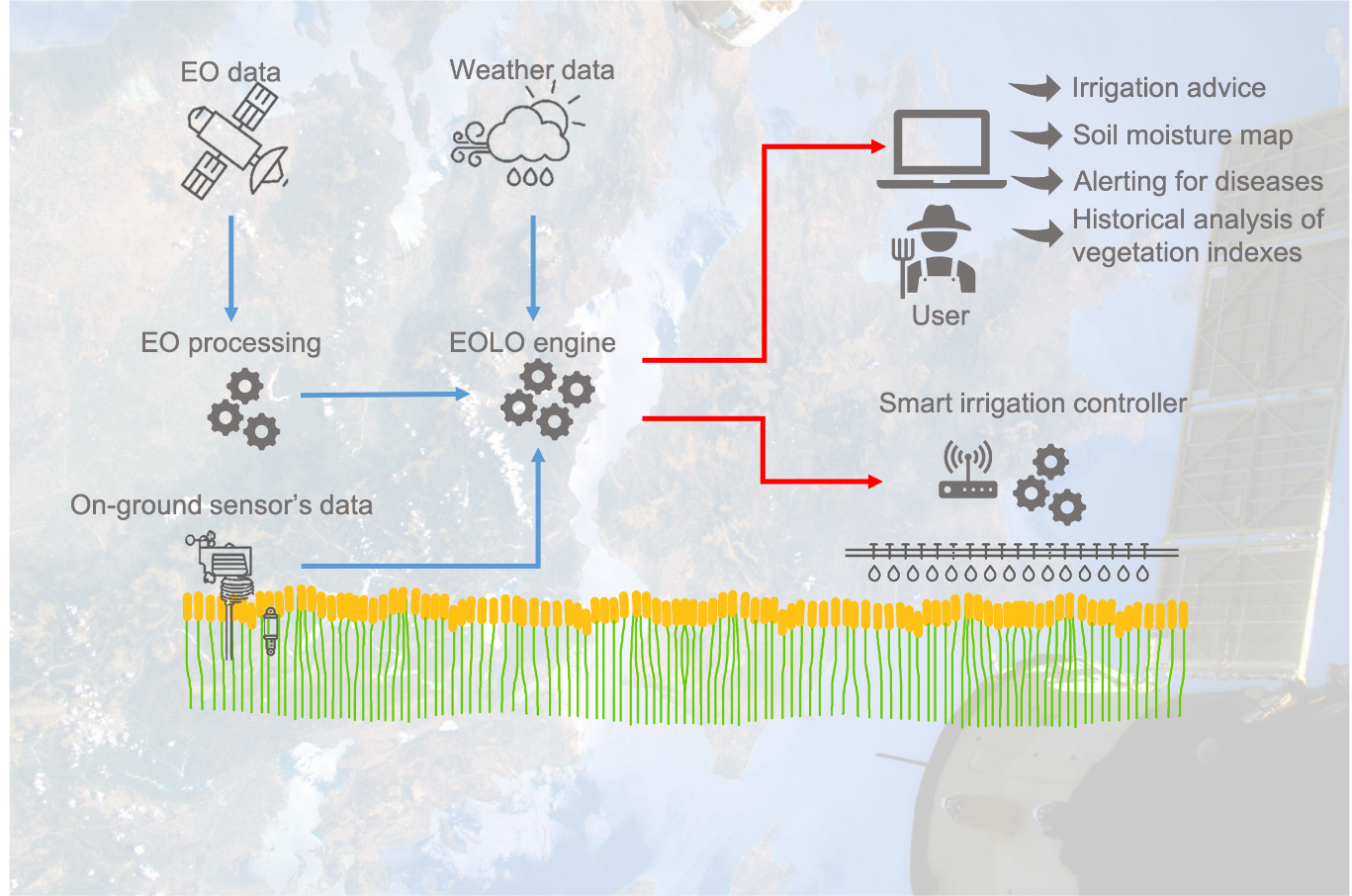
Space Added Value
EOLO service is mainly based on free available and high revisit time SAR Sentinel-1 and multispectral Sentinel-2 products, or Landsat8 products in case of data unavailability due to cloud coverage. Satellite earth observation products allow to spatialize the information and to optimize the distribution of the local sampling from on-field sensors. By leveraging those products, EOLO is able to provide a soil moisture map and a vegetation indexes maps having a resolution of the order of tens of meters over the user’s field. The uniqueness of the EOLO service relies on the ability to integrate EO and on-ground sensors data providing a soil moisture map which gives an estimation of soil moisture at multiple depths. This feature allows the user to have a better picture of the water stress condition of the field, instead of having just a surface moisture, which is not sufficient to decide whether irrigate or not. Moreover, on-ground sensors are used to calibrate the machine learning algorithms that extract the soil moisture from the EO data, and this process is reiterated for each new customer, so that the estimation is tailored over the specific field.
Current Status
The consortium has successfully concluded the Final Review (FR) on February 23rd, 2023. EOLO was tested over three pilot users on corn fields during the season 2022 and the pilot was operational from mid-June to end of September. The key results from the pilot stage are the following:
-
An average water saving of 16% was achieved compared to the traditional irrigation without impacting the yield.
-
A greater water saving, about 33%, was achieved on the pilot field where the irrigation was managed by a local consortium that operated fixed irrigation turns. During the season 4 out of 11 irrigation turns were skipped thanks to the contribution of the rainfalls.
-
The feature of crop health monitoring turned out to be very useful for the farmer to discover or confirm areas of the field that shows a “deficit”, which could be caused by many reasons such as lack of water or the presence of a disease.
-
The irrigation system of one of the pilot users was automated by using the Bluetentacles’ solution and this allowed to control the irrigation according to the irrigation advice generated by the EOLO engine.
The results achieved show the scalability of the product over large fields thanks to the fusion of in-field and satellite data. The next step is to go to the market in the crop season 2023 by leveraging the already existing consortium customer base. Furthermore, to speed up the scalability and penetration in the market, the idea is to expand the service to other crops in order to expand the serviceable available market.



